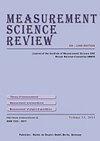基于堆叠自编码器的特征迁移学习和优化LSSVM-PSO分类器在轴承故障诊断中的应用
IF 0.8
4区 工程技术
Q4 INSTRUMENTS & INSTRUMENTATION
引用次数: 3
摘要
摘要本文提出了一种新的滚动轴承多级故障大数据预测诊断技术,该技术采用深度学习方法对振动信号进行特征表示,并优化机器学习模型。首先,提出了基于两层叠置自编码器(VFE-SAE)的滚动轴承故障信号振动特征提取方法。VFE-SAE中的无监督学习算法用于揭示振动数据的重要特性,如非线性和非平稳特性。提取的特征可以为故障诊断任务提供良好的可判别性。其次,基于最小二乘支持向量机分类和粒子群算法(LSSVM-PSO)对分类器模型进行了优化。该模型用于监督微调和分类;用标记的特征对其进行训练,以识别目标数据。特别是利用迁移学习,可以对轴承故障诊断技术的性能进行微调。也就是说,通过学习特征表示来提取目标振动信号的特征,而特征表示依赖于VFE-SAE方法的隐层权矩阵。实验结果(通过分析具有多状态故障的滚子轴承振动信号)表明,基于VFE-SAE的特征提取结合LSSVM-PSO分类器比其他流行的分类器模型更准确。提出的VFE-SAE - LSSVMPSO方法在使用80%的目标数据时,能有效诊断轴承故障,准确率为97.76%。本文章由计算机程序翻译,如有差异,请以英文原文为准。
Stacked Auto-encoder Based Feature Transfer Learning and Optimized LSSVM-PSO Classifier in Bearing Fault Diagnosis
Abstract This paper proposes a new diagnosis technique for predicting the big data of roller bearing multi-level fault, which uses the deep learning method for the feature representation of the vibration signal and an optimized machine learning model. First, vibration feature extraction by stacked auto-encoders (VFE-SAE) with two layers in roller bearing fault signals is proposed. The unsupervised learning algorithm in VFE-SAE is used to reveal significant properties in the vibration data, such as nonlinear and non-stationary properties. The extracted features can provide good discriminability for fault diagnosis tasks. Second, a classifier model is optimized based on least squares support vector machine classification and particle swarm optimization (LSSVM-PSO). This model is used to perform supervised fine-tuning and classification; it is trained with the labelled features to identify the target data. Especially, using transfer learning, the performance of the bearing fault diagnosis technique can be fine-tuned. In other words, the features of the target vibration signal can be extracted by the learning of feature representation, which is dependent on the weight matrix of hidden layers of the VFE-SAE method. The experimental results (by analyzing the roller bearing vibration signals with multi-status fault) demonstrate that VFE-SAE based feature extraction in conjunction with the LSSVM-PSO classification is more accurate than other popular classifier models. The proposed VFE-SAE – LSSVMPSO method can effectively diagnose bearing faults with 97.76 % accuracy, even when using 80 % of the target data.
求助全文
通过发布文献求助,成功后即可免费获取论文全文。
去求助
来源期刊

Measurement Science Review
INSTRUMENTS & INSTRUMENTATION-
CiteScore
2.00
自引率
11.10%
发文量
37
审稿时长
4.8 months
期刊介绍:
- theory of measurement - mathematical processing of measured data - measurement uncertainty minimisation - statistical methods in data evaluation and modelling - measurement as an interdisciplinary activity - measurement science in education - medical imaging methods, image processing - biosignal measurement, processing and analysis - model based biomeasurements - neural networks in biomeasurement - telemeasurement in biomedicine - measurement in nanomedicine - measurement of basic physical quantities - magnetic and electric fields measurements - measurement of geometrical and mechanical quantities - optical measuring methods - electromagnetic compatibility - measurement in material science
 求助内容:
求助内容: 应助结果提醒方式:
应助结果提醒方式:


